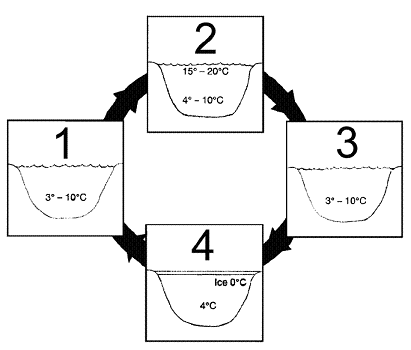Injection of a single antigen usually results in production of
A. antibody to a single epitope.
B. an antibody that recognizes several epitopes.
C. additional antigen.
D. a number of antibodies each recognizing a different epitope.
D
You might also like to view...
The fact that cells of genetically uniform population do not have similar phenotypic attributes is called ________ heterogeneity.
A. population B. dissimilar C. quorum D. epigenetic
Hershey and Chase tagged the DNA of viruses with radioactive phosphorus, and their protein coats with radioactive sulfur. When the viruses were allowed to infect bacteria, what did the viruses transfer to the bacteria?
A. radioactive phosphorus B. neither radioactive phosphorus nor sulfur C. radioactive phosphorus and sulfur D. radioactive sulfur
Refer to the accompanying figure. Which of the following represents the fall turnover?

a. 1 going to 2
b. 2 going to 3
c. 3 going to 4
d. 4 going to 1
e. 4 going to 2
What kind of algae are rhodophyta?
a. brown b. red c. blue-green d. golden